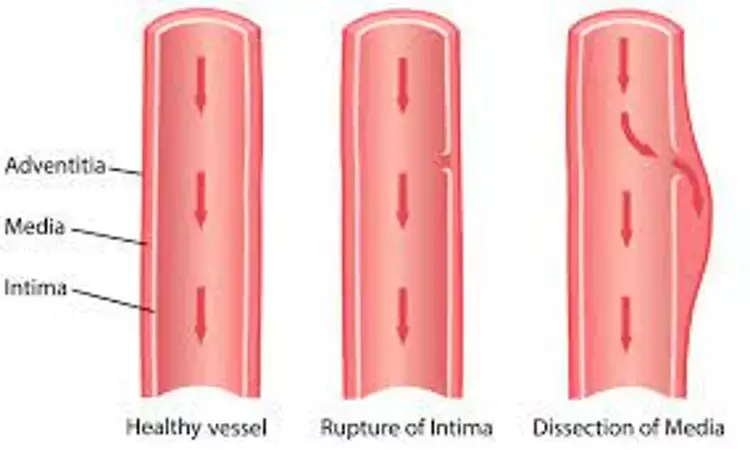- Home
- Medical news & Guidelines
- Anesthesiology
- Cardiology and CTVS
- Critical Care
- Dentistry
- Dermatology
- Diabetes and Endocrinology
- ENT
- Gastroenterology
- Medicine
- Nephrology
- Neurology
- Obstretics-Gynaecology
- Oncology
- Ophthalmology
- Orthopaedics
- Pediatrics-Neonatology
- Psychiatry
- Pulmonology
- Radiology
- Surgery
- Urology
- Laboratory Medicine
- Diet
- Nursing
- Paramedical
- Physiotherapy
- Health news
- Fact Check
- Bone Health Fact Check
- Brain Health Fact Check
- Cancer Related Fact Check
- Child Care Fact Check
- Dental and oral health fact check
- Diabetes and metabolic health fact check
- Diet and Nutrition Fact Check
- Eye and ENT Care Fact Check
- Fitness fact check
- Gut health fact check
- Heart health fact check
- Kidney health fact check
- Medical education fact check
- Men's health fact check
- Respiratory fact check
- Skin and hair care fact check
- Vaccine and Immunization fact check
- Women's health fact check
- AYUSH
- State News
- Andaman and Nicobar Islands
- Andhra Pradesh
- Arunachal Pradesh
- Assam
- Bihar
- Chandigarh
- Chattisgarh
- Dadra and Nagar Haveli
- Daman and Diu
- Delhi
- Goa
- Gujarat
- Haryana
- Himachal Pradesh
- Jammu & Kashmir
- Jharkhand
- Karnataka
- Kerala
- Ladakh
- Lakshadweep
- Madhya Pradesh
- Maharashtra
- Manipur
- Meghalaya
- Mizoram
- Nagaland
- Odisha
- Puducherry
- Punjab
- Rajasthan
- Sikkim
- Tamil Nadu
- Telangana
- Tripura
- Uttar Pradesh
- Uttrakhand
- West Bengal
- Medical Education
- Industry
Even mild increase in systolic and diastolic BP tied with risk of aortic dissection: Study

Mild increase in systolic and diastolic BP can increase the risk of aortic dissection, according to a recent study published in the Circulation.
Hypertension or elevated blood pressure (BP) is an important risk factor for aortic dissection (AD); however, few prospective studies concerning this topic have been published. They investigated the association between hypertension/elevated BP and AD in two cohorts and conducted a meta-analysis of published prospective studies, including these two studies.
The researchers analyzed data from the Japan Specific Health Checkups (J-SHC) Study and UK Biobank, which prospectively followed 534,378 and 502,424 participants, respectively. Multivariable Cox regression was used to estimate hazard ratios (HRs) and 95% confidence intervals (95% CIs) for the association of hypertension/elevated BP with AD incidence in the UK Biobank and AD mortality in the J-SHC Study. In the meta-analysis, summary relative risks (RRs) were calculated using random effects models. A potential nonlinear dose-response relationship between BP and AD was tested using fractional polynomial models, and the best-fitting second-order fractional polynomial regression model was determined.
The Results of the study are:
In the J-SHC Study and UK Biobank, there were 84 and 182 ADs during 4- and 9-year follow-up, and the adjusted HRs of AD were 3.57 (95% CI, 2.17-6.11) and 2.68 (95% CI: 1.78-4.04) in hypertensive individuals, 1.33 (95% CI: 1.05-1.68) and 1.27 (95% CI: 1.11-1.48) per 20-mmHg increase in systolic BP (SBP), and 1.67 (95% CI: 1.40-2.00) and 1.66 (95% CI: 1.46-1.89) per 10-mmHg increase in diastolic BP (DBP), respectively. In the meta-analysis, the summary RRs were 3.07 (95% CI 2.15-4.38, I2=76.7%, n=7 studies, 2,818 ADs, 4,563,501 participants) for hypertension and 1.39 (95% CI: 1.16-1.66, I2=47.7%, n=3) and 1.79 (95% CI: 1.51-2.12, I2=57.0%, n=3) per 20-mmHg increase in SBP and per 10-mmHg in DBP, respectively. The AD risk showed a strong, positive dose-response relationship with SBP and even more so with DBP. The risk of AD in the nonlinear dose-response analysis was significant at SBP >132 mmHg and DBP >75 mmHg.
Thus, the researchers concluded that hypertension and elevated SBP and DBP are associated with a high risk of AD. The risk of AD was positively dose-dependent, even within the normal BP range. These findings provide further evidence for the optimization of BP to prevent AD.
Reference:
Blood Pressure, Hypertension and The Risk of Aortic Dissection Incidence and Mortality: results from the Japan-Specific Health Checkups Study, the UK Biobank Study and a Meta-analysis of Cohort Studies by Makoto Hibino et al. published in the Circulation.
https://doi.org/10.1161/CIRCULATIONAHA.121.056546
Dr. Shravani Dali has completed her BDS from Pravara institute of medical sciences, loni. Following which she extensively worked in the healthcare sector for 2+ years. She has been actively involved in writing blogs in field of health and wellness. Currently she is pursuing her Masters of public health-health administration from Tata institute of social sciences. She can be contacted at editorial@medicaldialogues.in.
Dr Kamal Kant Kohli-MBBS, DTCD- a chest specialist with more than 30 years of practice and a flair for writing clinical articles, Dr Kamal Kant Kohli joined Medical Dialogues as a Chief Editor of Medical News. Besides writing articles, as an editor, he proofreads and verifies all the medical content published on Medical Dialogues including those coming from journals, studies,medical conferences,guidelines etc. Email: drkohli@medicaldialogues.in. Contact no. 011-43720751


